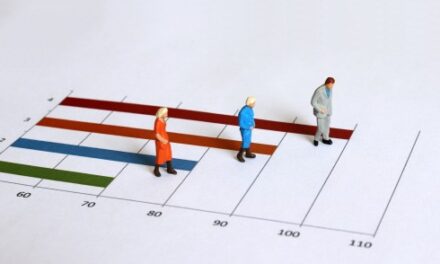
Men often thrive in their careers as they hit their mid-30s and 40s — getting some gray hairs, maybe some glasses, and a few wise wrinkles have them looking more respectable as they age because society allows, nay, encourages them to do so. Women in the workplace, on the other hand, are often discriminated against at every single age, with not even a one-year “sweet spot” for women when it comes to thriving in their careers.
Researchers Amy Diehl, Leanne M. Dzubinski and Amber L. Stephenson surveyed over 900 women in leadership, working in higher education, faith-based nonprofits, law, and health care with open-ended questions. These questions worked to better understand the different types of bias they may have experienced over the course of their careers.
The findings, which are undergoing peer review at a journal, show that gendered age biases are alive and well — at almost any age.
Specifically, what Diehl, Dzubinski and Stephenson discovered is that there is no mythical “prime” working age or “sweet spot” for professional women. In other words, no matter what age a woman is while in the workforce, they will likely be discriminated for their age in some capacity.
Women under 40 in the study saw their experience and credibility dismissed because of their age, while women between 40 and 60 continued to experience gendered ageism, too.
“There was always an age-based excuse to not take women seriously, to discount their opinions, or to not hire or promote them,” the researchers wrote.
“While men become wells of wisdom as they age, older women are seen as outdated, harpy, strident,” one physician noted. “Our voices are discounted.”
Many of the women surveyed felt discouraged, burnt out, and resigned due to the ageism in the workplace with no signs of advancing any further in their career.
One 66-year-old faith-based leader said, “At my age and with the mentality of our organization that they need men at the top, there is not a next professional step.”
Another woman in the same industry noted that once she turned 60, she was no longer “worth investing in with training or mentoring.”
Younger women also experienced their own version of ageism which the study refers to as “youngism.”
One woman under 40 reported being called pet names or even patted on the head like a child.
Young women also experienced what is called role incredulity. They reported being mistaken for students, interns, trainees, support staff, secretaries, paralegals, and court reporters. This was even more common non-White women, such as an Asian higher-education executive who appeared young and was presumed to be in a junior position.
Along with role incredulity, younger women were often victims of the credibility deficit, which occurs when women’s statements and expertise are not believed.
“I am often told that I don’t have the experience so I can’t know what to do,” one 34-year-old woman explained. In the face of such bias, women (and especially women of color) have to go the extra mile to establish credibility.
Another aspect of the female work experience to add to the “Things Men Never Have To Deal With” list is their appearances being judged or scrutinized.
According to researchers, one physician noted that between ages 20 and 40, men focused on her looks. After she gave a presentation that she was very proud of, a male colleague told her that she “looked like a Barbie doll up there!”
Out of the 913 women surveyed, of all different ages, researchers found that there is truly no age that works in the favor of women who want to be respected and promoted in the workplace.
“In our research we found no age was the right age to be a woman leader. There was always an age-based excuse to not take women seriously, to discount their opinions, or to not hire or promote them,” the study says.
“Each individual woman may believe she’s just at the wrong age, but the data make the larger pattern clear. Any age can be stigmatized by supervisors and colleagues to claim that the woman is not valued or is not a fit for a leadership role.”
Though this study is not super surprising and altogether quite depressing, there are some ways to help combat this sad truth about gendered ageism in the workplace.
First, gendered ageism has to exist and be recognized. “All employees should be trained on gendered age bias, just as they are on other forms of discrimination,” researchers suggest.
Secondly, skills should the center of workplace decisions rather than gender, age, or looks.
“Rather than focusing on age when hiring, making promotion decisions, or bringing on new team members for a growth opportunity, leaders should focus on each woman’s skills, not their tenure or external demands,” the study explains.
“The allies need to stand up in the moment and say, ‘Hey, that’s not right. We shouldn’t be discounting this person, because of their age or because they have family responsibilities,’” one of the head researchers on the study, Amy Diehl, told the HuffPost.
Women in the workplace deserve respect, especially since for the nation as a whole, the labor force participation rate for women was 56.8% in 2022.
Until the work is done by men in positions of power and leadership, women’s ages will continue to be stigmatized and judged based on nothing pertaining to their ability to work.




